
26 Different Types of Houses
Searching for your dream home isn’t as easy as it seems, but it doesn’t have to be difficult either. Everyone plans on one day buying their dream home. Some people assume they’ll find their dream dwelling instantly. At times, house hunting can be confusing and stressful. It’s hard to understand all the terminology and types of houses on the market. We have a clear picture in our heads, but it’s impossible to explain that to a real estate agent. We want the perfect house that’s cozy, stunning, big, and makes our friends jealous. Some people want something modern while others are looking for something a little more classic. Well, there’s a lot to consider when house hunting. More importantly, it’s very possible to find that dream house with some patience and help. Luckily, we have a guide to all the types of houses on the market.
It’s vital to figure out the type of house you’re looking to buy. House hunting is broken down into two main categories. First, there are types of structures, such as single-family homes, condos, and townhouses. Simply put, it’s the type of house you want to call home. Once the buyer figures out the type of house, they can move on to the architectural design. These styles include contemporary homes, Victorian, modern farmhouses, and bungalows.
Buying a home can be overwhelming and challenging at times. However, the first step is to have a clear idea of the type of home you want to call a house. As they say, home is where the heart is. Here’s a guide to help first-time buyers or homeowners looking for something new.
See more about - The 13 Biggest Houses In The World
Table of Contents
Types of Houses: Structures
The easy part is deciding that you want to purchase a new place to live. However, there are so many different structures it’s tough to know where to start. First-time buyers learn quickly that there are more than just houses and apartments on the market. Even current homeowners find it difficult to narrow their choices down to one.
It’s essential to have a clear idea of the type of structure of the home you’re looking to purchase. Some couples are looking to buy a single-family home in the suburbs to start a family. On the other hand, buyers might be looking for something affordable in a city close to work. Renting might be the only option when it comes to affordability.
1. Townhouse

Townhouses are individual residences with multiple floors, separate entrances, kitchens, and bedrooms. They often share one or two walls with neighbors, which reduces privacy. Also known as a townhome, the homes are side-by-side, so they make the most of the vertical space.
One of the most significant advantages of a townhouse is the affordable price. It costs less than a single-family home, but there’s a drawback. The main cons of a townhouse are the lack of freedom to make changes and privacy.
2. Multi-Family

Multi-family homes are cross-between apartment buildings and townhouses. Multi-family homes are a property consisting of housing units with their own kitchen, bathroom, and main entrance. The units are either stacked on top of each other or side-by-side. Multi-family homes can also be apartments, condos, or co-ops.
3. Semi-Detached
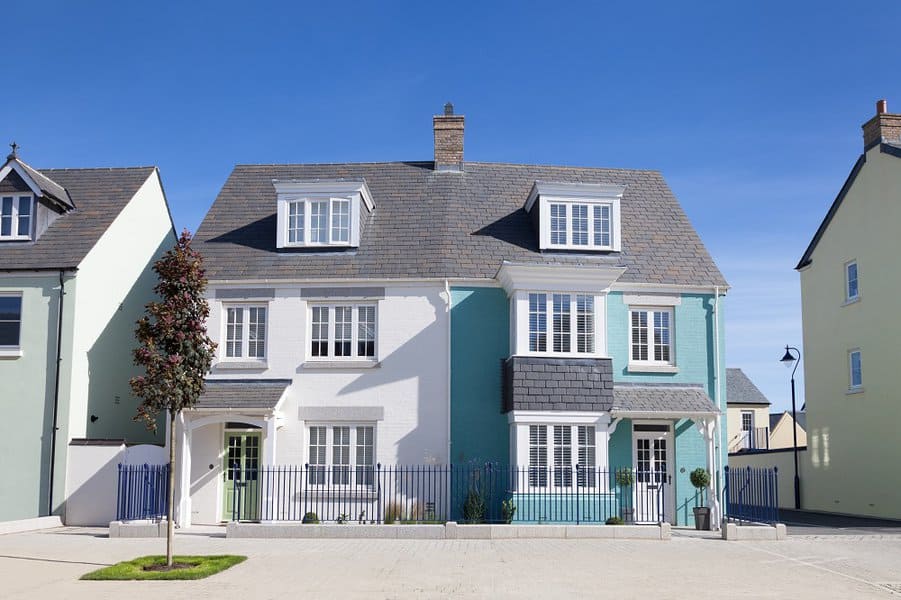
Semi-detached homes are duplex residences that share one wall with a neighbor. It’s halfway between a single-family home and a townhouse. In most cases, semi-detached houses come in pairs.
They often feature a kitchen, multiple bedrooms, and one and a half bathrooms. Semi-detached homes all follow the same layout and look identical. There’s a bit more freedom than a townhouse but about the same amount of privacy.
4. Single-Family
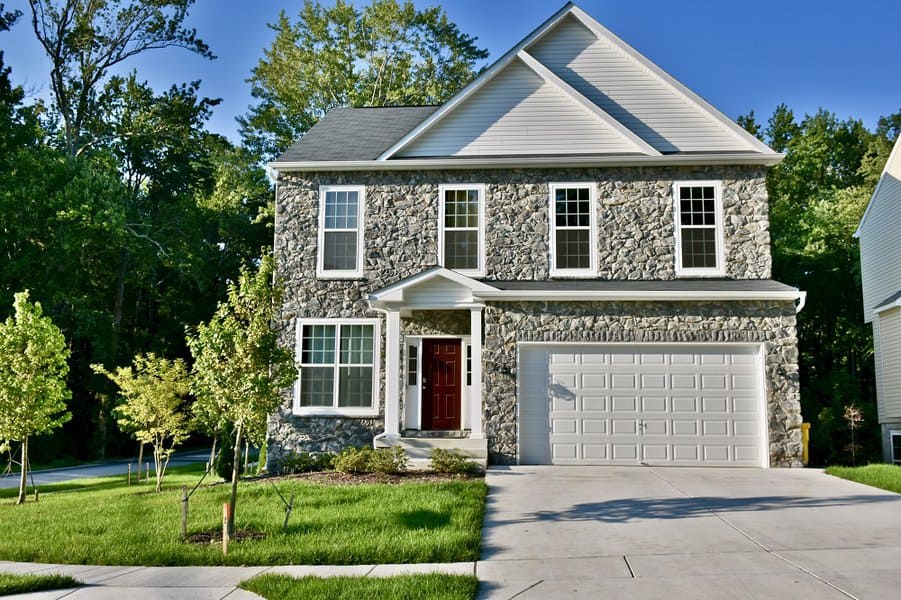
Single-family homes are the most common type of houses. For most people, owning a single-family home is the ultimate goal. Unlike apartments, townhouses, and condos, a single-family home stands on its own and doesn’t share a wall with neighbors. These styles of homes usually feature two or more floors with a kitchen, multiple spaces, bedrooms, and bathrooms.
Depending on the size and style, many include a large backyard, balconies, and open porches. Single-family homes are private and usually found in the suburbs or other highly populated areas. These types of houses offer lots of privacy and freedom to make any changes. However, they also cost more to purchase and maintain.
5. Tiny Home
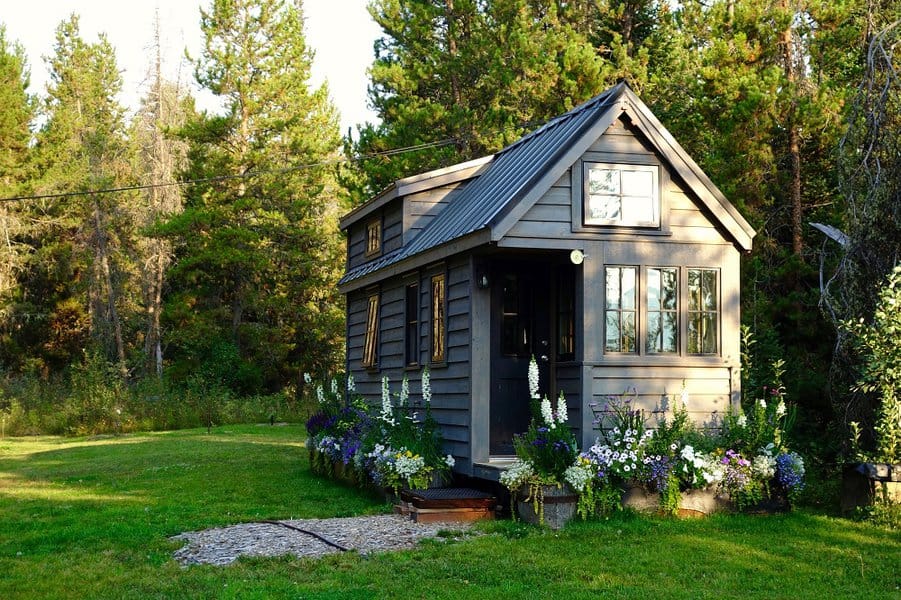
In the last few years, tiny homes have exploded in popularity. Also known as the tiny house movement, these small dwellings are about 60 to 400 square feet. They come in various styles, but the main point is it’s a small home. Some tiny houses are prefabricated, and others are custom jobs.
Tiny homes provide a simpler way of life and allow the owners to focus on relationships, passion projects, and traveling due to the low cost. The residence is ideal for single people or couples looking to keep expenses down. However, the small space leaves no room for family growth.
6. Mobile Home

The mobile home first appeared in the 1970s and quickly grew in popularity. They’re prefabricated structures constructed in a factory. Mobile abodes are permanently attached to a chassis with wheels allowing for transportation to the permanent or temporary location.
It’s ideal for people who can’t afford the traditional home or even commit to renting a space. One of the main benefits of a mobile home is easily moving to another location.
7. Apartment

An apartment is a structure with a set of similarly styled separate units. However, apartments often feature shared common areas like the pool, laundry room, and gym. At the same time, tenants usually rent the unit from a landlord.
Therefore, the tenant isn’t building up any home equity. On the other hand, the landlord handles all repairs and upgrades needed for the building and units. With apartments, there’s very little privacy or freedom.
8. Condo

A condo is similar to an apartment because it’s a building structure with a collection of units. They often have the same feeling as an apartment but differ in many ways. Like a single-family home, the owner purchases the unit and builds equity with the mortgage payments. There’s no landlord, so the owner is responsible for repairs and upgrades to the unit.
It may also include shared areas, but the homeowners association maintains that for the building. A condo is excellent for anyone looking to live in a city and own property but doesn’t want the responsibility of a single-family home.
9. Co-Op
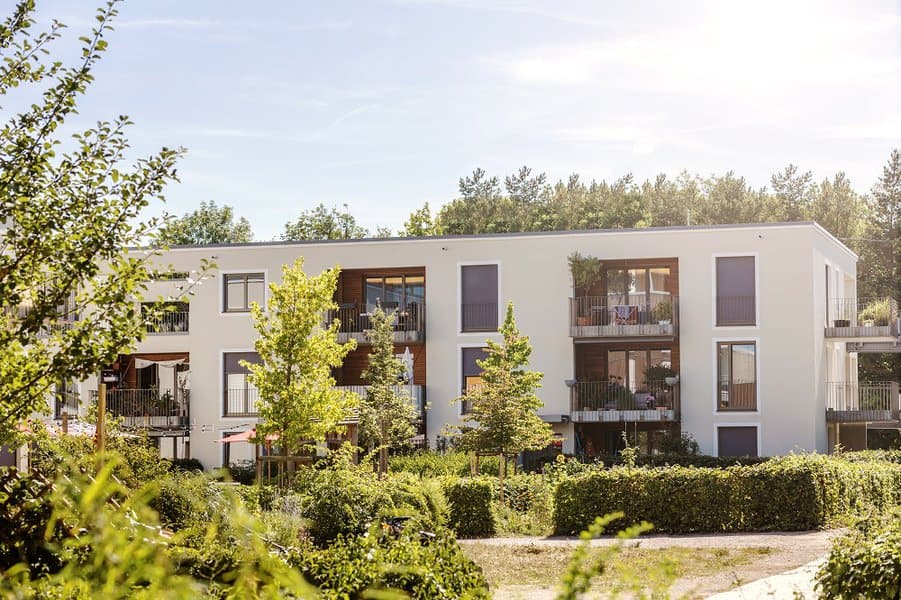
A co-op is a building structure like an apartment or condo but differs significantly. Also known as a housing cooperative, a corporation usually owns the physical building. People invest in the corporation instead of renting or buying.
The investor or shareholder owns a share of the company that owns the property instead of the unit. The shareholders appoint a board of directors that handles the repairs and maintenance. Co-ops are very affordable in a large community. However, there’s very little privacy and zero freedom with the group making all decisions together.
See more about - The 10 Most Expensive Homes In America
Types of Homes: Architectural Designs
There are hundreds of different types of houses on the market. Knowing the type of architectural designs will inform the exterior and interior layout of the home. The type of house also depends on the period they were built. For instance, English culture heavily influenced several types of abodes during the Victorian era. At the same time, the French, Greek, and Italian cultures all inspired dwellings throughout the world.
Some owners take an old house with a classic architectural design and restore it to today’s standards. For example, Victorian, Tudor, and Cape Cod-style homes are still popular. At the same time, new homes with influences from past architectural styles hit the market yearly, such as modern mid-century, contemporary, and modern farmhouses. Knowing the style will help you and the real estate agent narrow down the best possible options.
10. Contemporary Styles
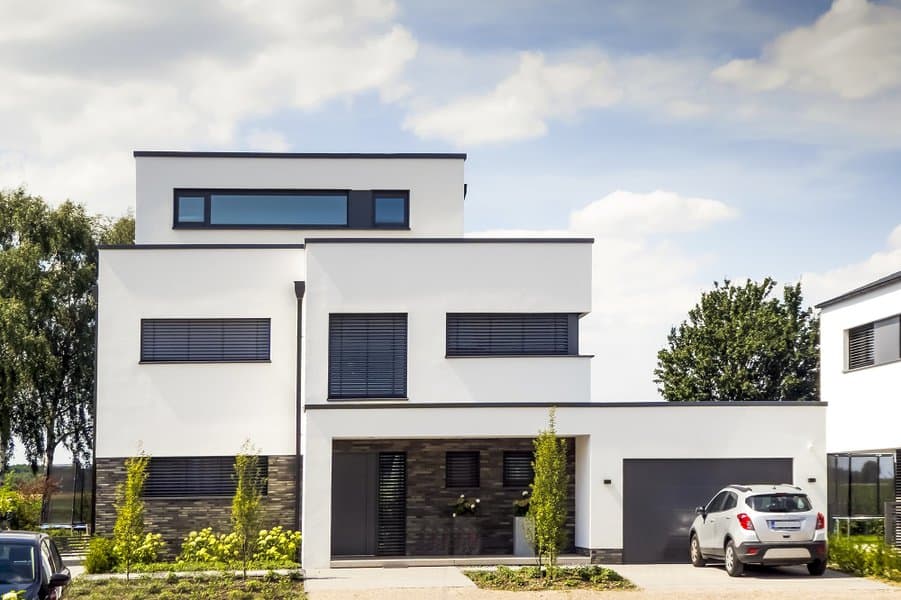
Contemporary homes feature eco-friendly materials with natural textures and clean lines. The colors are frequently neutral, with dabs of bright colors on the interior. Contemporary style is often confused with modern homes, but they differ significantly. A “modern” home refers to a style in the past while “contemporary” is now. However, contemporary homes usually feature modern-style aspects.
Highlights: Edco-friendly, clean lines, natural textures, and neutral colors.
11. Mid-Century Modern-Style

The mid-century modern style appeared just after World War II and gained massive popularity throughout the 1950s. It’s a simple style tied closely with nature and features open spaces and large windows.
The main point of mid-century modern is all about function as form. During construction, mid-century modern uses a mix of concrete, steel, and plywood.
Highlights: Open floor plan with large floor-to-ceiling windows and wide, flat roofs
12. Ranch-Style

After World War II, ranch-style homes became popular with soldiers returning from the war. They became immensely popular in the 1950s due to their unique design and affordable price.
A ranch house is easily recognizable for its horizontal structure, low-pitched roofs, and sliding glass doors. Ranch homes are also famous for being one story with a wide open backyard, lots of open space, and large windows.
Highlights: One-story with large windows, an attached garage, sliding glass doors, and a big backyard with lots of space.
13. Split-Level
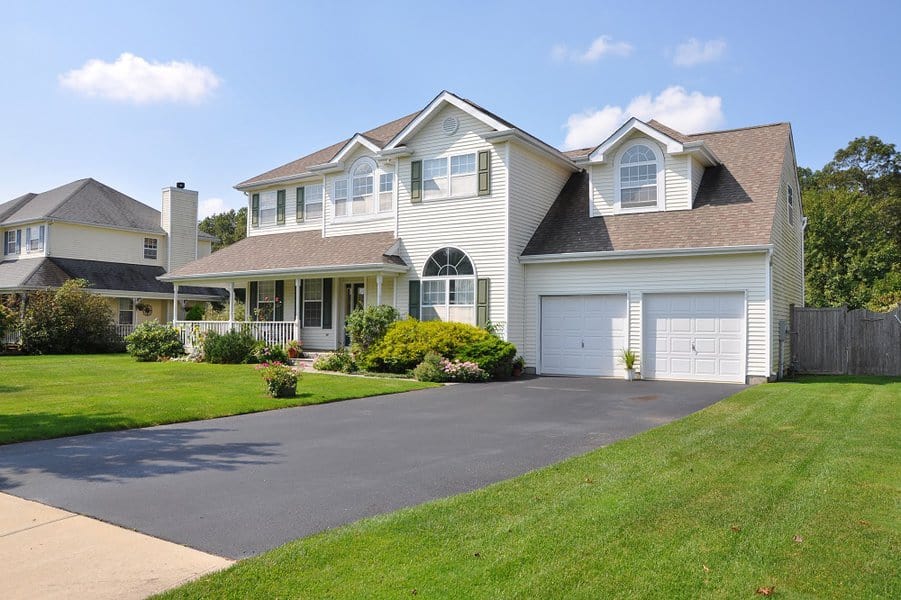
In the 1950s and 60s, split-level homes experienced a boom in popularity. It’s an offshoot of the ranch-style abode that was also popular during that time. However, they differ from other homes in a significant way.
Unlike most two or three-story dwellings, split-level houses feature multiple floors with short flights of stairs instead of the standard long flight.
Highlights: Short flights of stairs instead of long flights.
14. Tudor-Style

In the 1800s, architects from England brought asymmetrical Tudor-style homes to North America. By the 1920s, they were all the rage and in huge demand. They’re famous for their storybook appearance, which takes inspiration from the Medieval and Renaissance eras.
Tudor homes feature steep multi-gabled roofs, ornate chimneys, and timber framing that complement the classic lead windows.
Highlights: Stone masonry with timber framework, narrow windows, and elaborate doorways. It boasts a steep roof, ornate chimneys, stone trim, and timber framing.
15. Cape Cod-Style
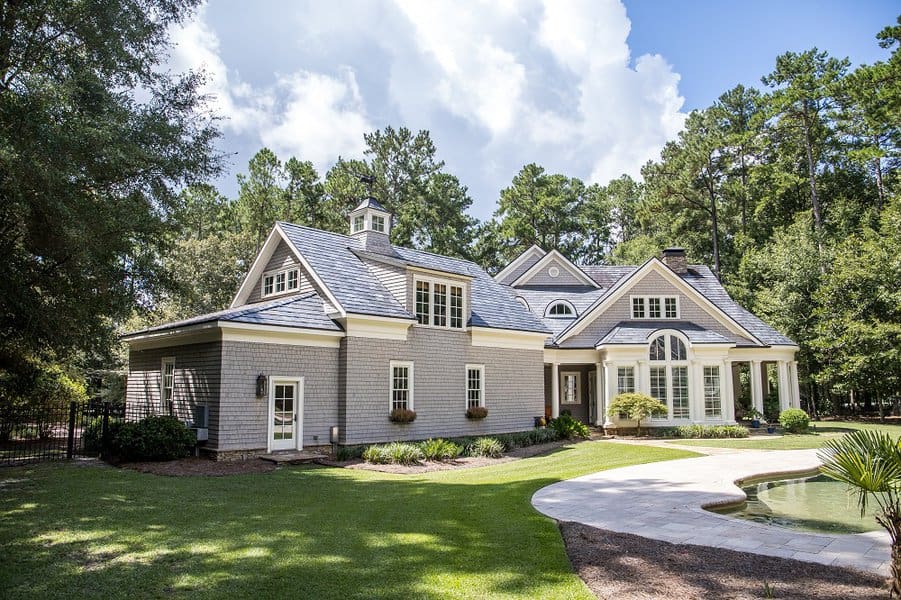
Cape Cod style, as the name suggests, first became popular in Cape Cod, Massachusetts, in the 1600s. The main idea behind the Cape Cod style at the time was to protect families from the rough New England winters.
At the time, Cape Cod-style featured heavy shutters, roof shingles, and a main entrance. The homes also included a central chimney to heat each room in the house. Many of these elements are incorporated into Cape Cod homes today. However, fireplaces and chimneys are on the side instead of the center of the home.
Highlights: Built using wood covered in shingles with a central doorway and steep roof.
16. Colonial Style
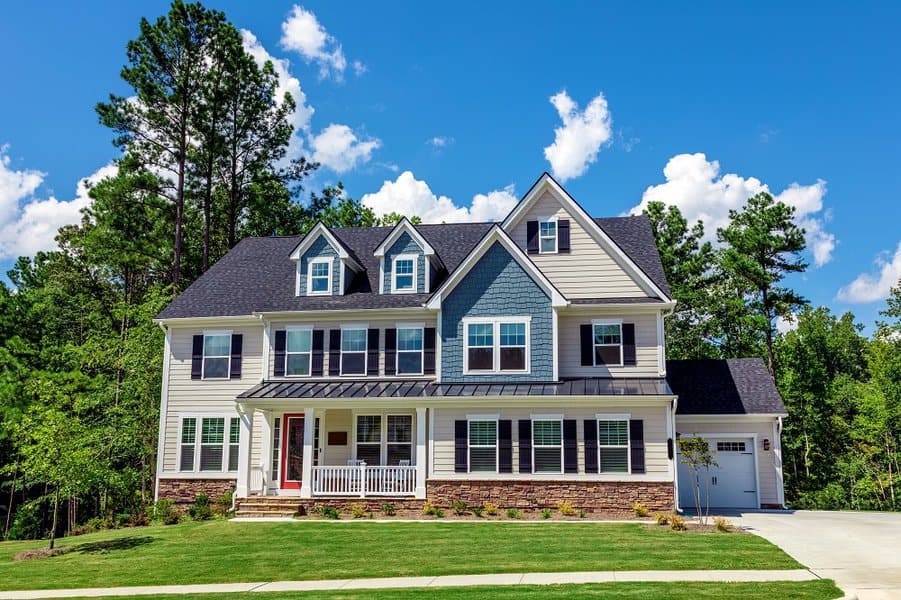
In the 1600s, colonial-style homes popped up around the same time as the Cape Cod style. Colonial homes were prevalent along the Eastern seaboard, where the winters were rough and harsh. The home’s simple symmetrical style includes a grand entrance, chimneys, and a series of evenly-spaced windows with shutters.
They’re usually two stories tall and feature a central fireplace, low ceilings, and a central staircase. French, Dutch, Spanish, and English colonists influenced the colonial style with their creative designs during that time.
Highlights: Two stories tall, including columns, a central staircase, a sloping roof, and a grand entrance with a decorative crown above the door.
17. Victorian-Style

Victorian-style homes began popping up during the reign of Queen Victoria in the late 1830s and early 1900s. Hence the name, Victorian-style. There are several different styles of Victorian homes, including stick, shingle, and Queen Anne. The houses are large, brightly painted structures with wraparound porches, steep roofs, and elaborate woodwork.
Highlights: Two to three stories high with a broad, steep roof, wraparound porches, verandas, and small towers. The exterior includes several rooms, featuring a formal living room, library, and formal dining room. They also boast deep archways and high ceilings.
18. Gothic Revival
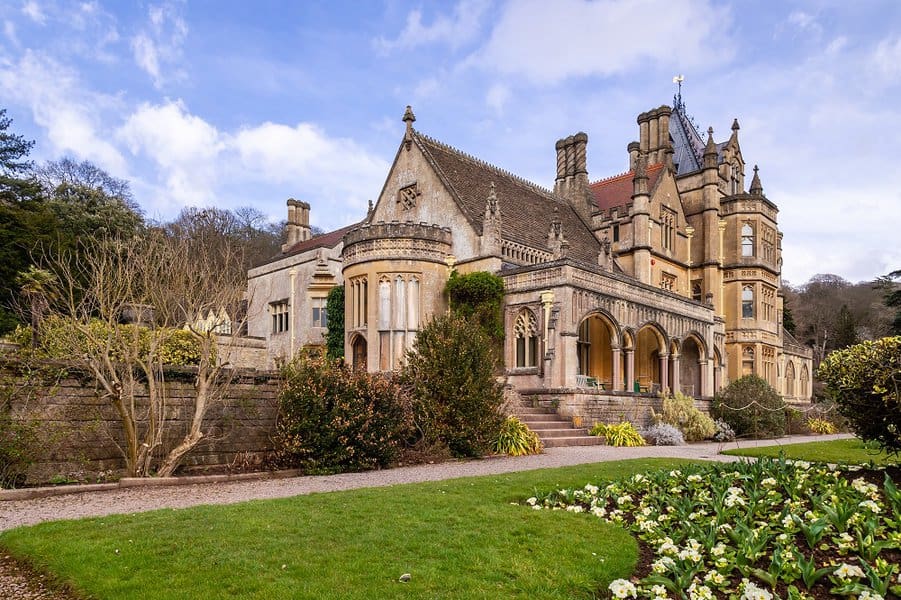
Due to the success of the Victorian, the Gothic revival style soon found its way to North America. It’s a staple of European culture and spread across the globe. They were hugely popular between 1840 and 1880 but eventually died out.
Gothic revival borrows heavily from European castles and cathedrals from that time. The homes are famous for their steeply pitched roofs with vertical siding, windows with pitched arches, and deep porches.
Highlights: Steeply pitched roofs, deep porches, and wood framing with gingerbread trim.
19. Mediterranean-Style

During the 16th century, Spanish settlers introduced North America to the breathtaking Mediterranean-style of home designs. Greek, Italian, and Spanish villas heavily influenced this particular type of house.
They often boast verandas, large arched windows, outdoor living spaces, and second-floor balconies. However, Mediterranean houses are best known for their white stucco interior and flat red clay roof tiles with stucco finishing.
Highlights: The architectural style boasts vast open spaces with second-floor balconies and elaborate outdoor living spaces that allow constant airflow. The houses are famous for the low-pitched red clay roof tiles, stucco finishing, and metal railings around balconies. Plus, the interior features white stucco walls and open seating areas.
20. Bungalow
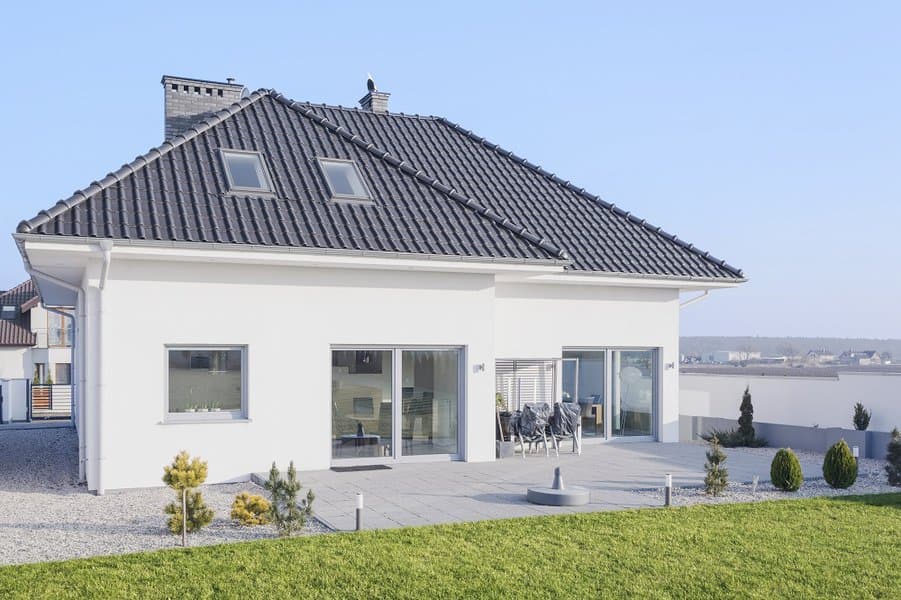
Henry and Charles Greene helped popularize bungalows in the United States during the 19th century. They had been popular in the UK for years before Americans got their hands on these affordable homes.
Bungalow-style homes are usually one-story with a sloping roof with a possible second story. The bungalow’s interior typically includes a fireplace, built-in cabinetry, and a large open living room.
Highlights: Bungalows come in various styles, including ranch-style, California-style, and Chicago-style. The incredible architectural design boasts a flat sloping roof supported by squared columns. Two impressive highlights are the stone elements and large open porches.
21. Craftsman
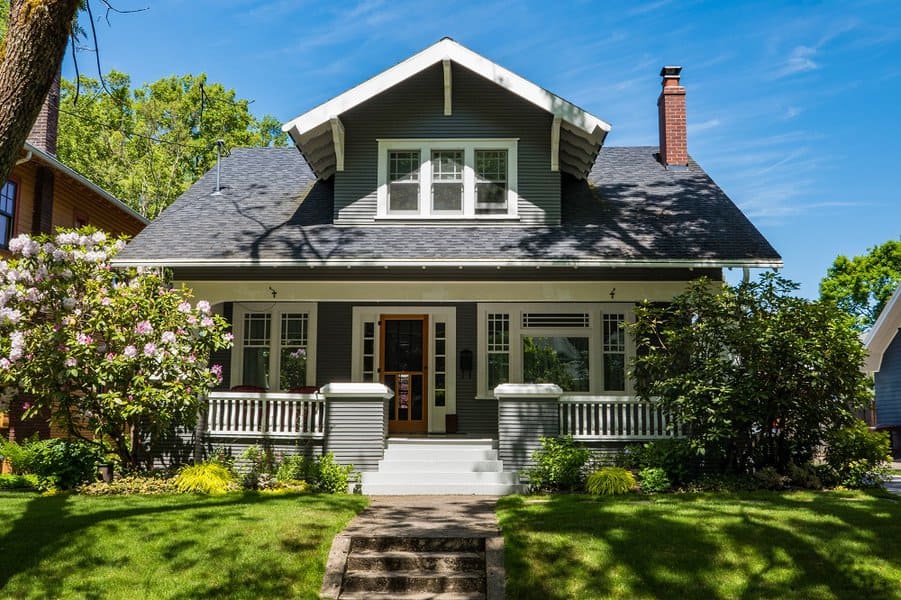
Sometimes, people are looking for an original house. They get tired of the cookie-cutter homes that all look the same on the inside and out. Therefore, the handmade and well-built Craftsman-style home is ideal.
These stunning and sturdy homes feature hand-worked materials with hand-laid fireplaces, window seats, and built-in bookshelves. The exterior of the Craftsman includes a low-pitched gabled roof and tapered columns on the porches.
Highlights: The handmade architectural design boasts hand-worked material and exposed beams. The main highlights include low-pitched roofs, built-in bookshelves, and hand-laid fireplaces.
22. Greek Revival
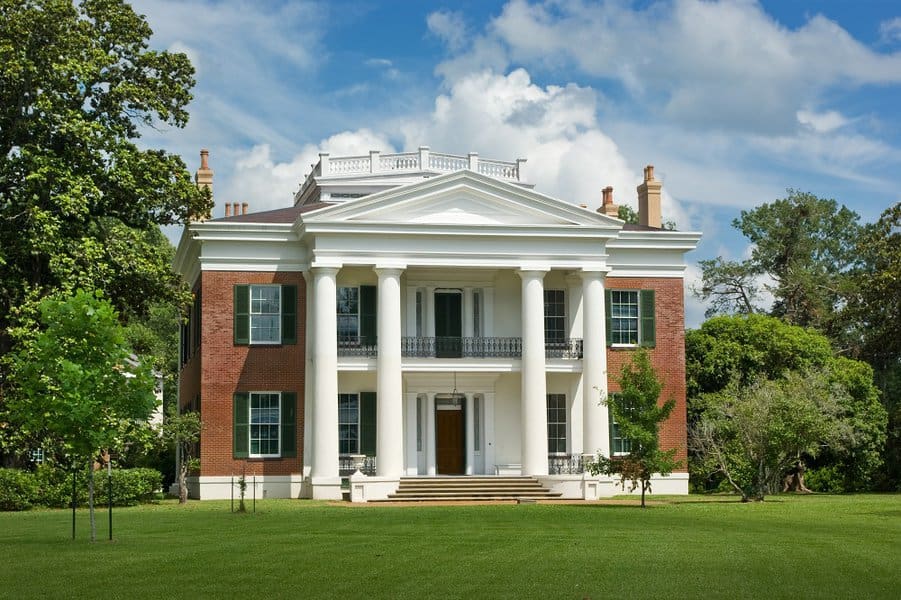
Influenced by Greek culture, Greek revival-style homes emerged in the 1830s in North America. These gorgeous homes feature columns inspired by Greek architecture like the Parthenon. A grand entrance is usually the highlight of the exterior.
In addition to the columns, the houses include other Greek-style embellishments and neutral colors. In many ways, the Greek revival homes helped make Greek architecture popular in North America and Europe again.
Highlights: Grand entrance with large columns and Greek embellishments.
23. French Country
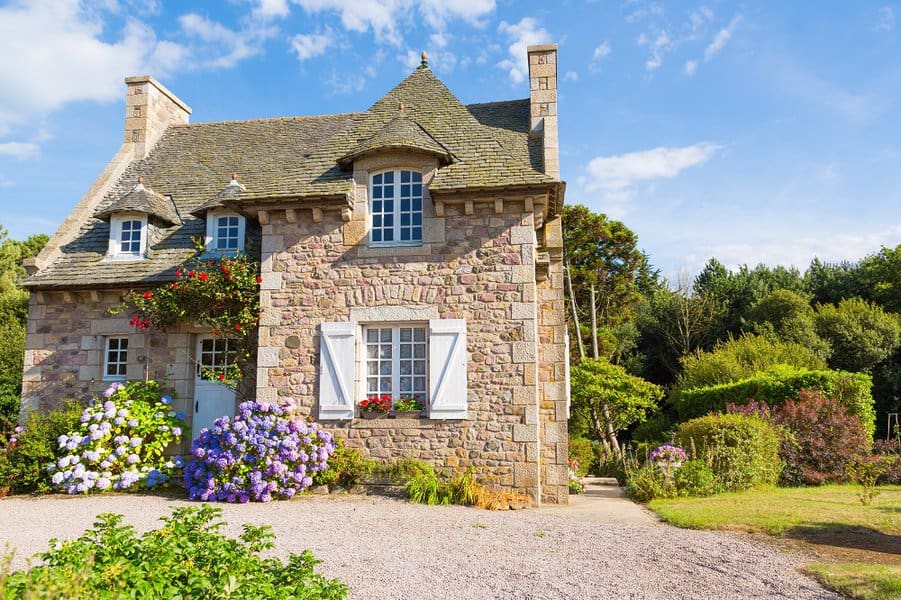
French country style features a stone exterior with pointed roofs and shutters. The interior boasts a stone fireplace, distressed wood, and weathered decor. French-style houses first became popular in the countryside of France before spreading across the world.
Highlights: French culture heavily influences the design and includes natural materials, stone, wood, and stone elements.
24. Modern Farmhouse
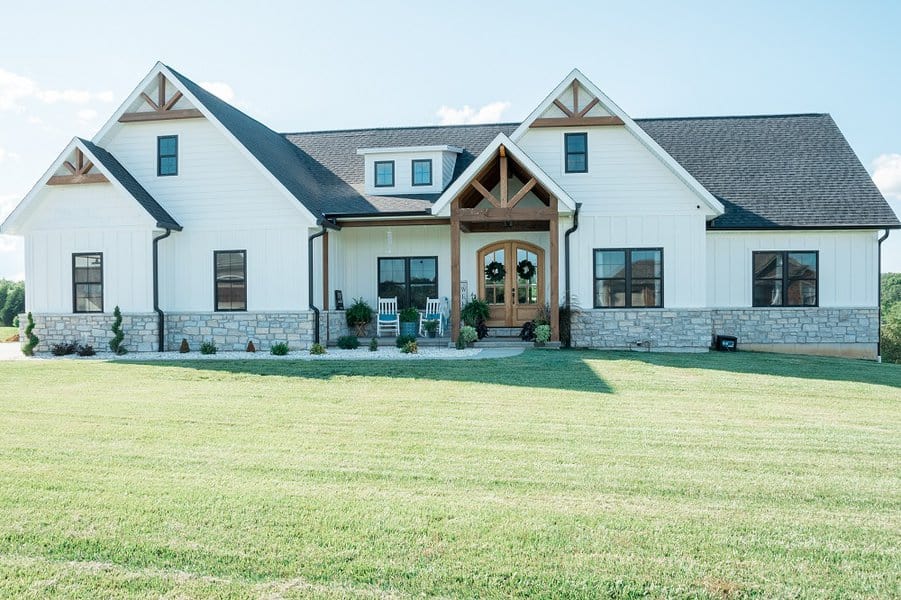
Inspired by traditional farmhouses, modern farmhouses are becoming hugely popular due to their unique design and rectangular layout. A distinctive feature of modern farmhouses is the exposed beams, brick, and stone. It has a rustic look with a big front porch, tall ceilings, and a central fireplace.
Highlights: It includes a rectangular layout with a barn-style roof, a central fireplace, and a large porch. It also features exposed brick, stone, and beams.
25. Prairie Style
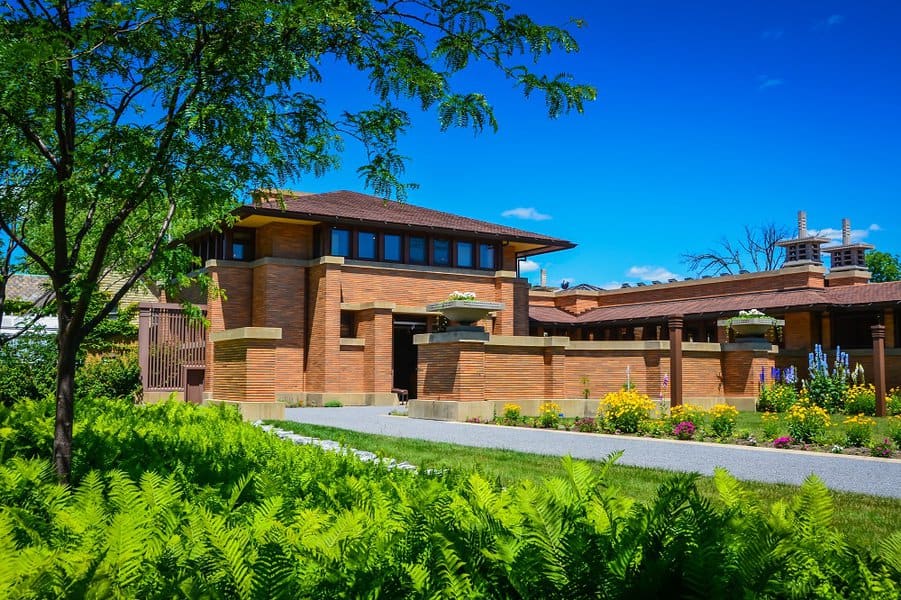
Architect Frank Lloyd Wright helped make prairie-style homes popular in North America during the Victorian era. During that time, architects were bored of the old European style of house and wanted to create something fresh and new. It features an open-concept floor plan with natural woodwork and flat roofs.
Highlights: The main part is an open-concept floor plan with long flat roofs to allow flowing air.
26. Cottage Style
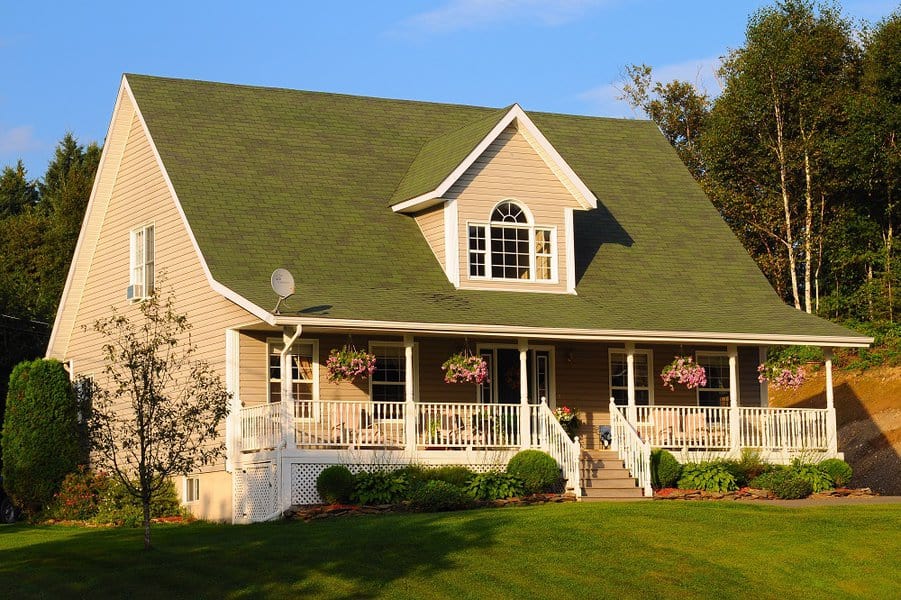
Nowadays, people often buy cottages for vacations in the summer and winter. However, that wasn’t the initial purpose of a cottage. In fact, the British brought the idea of cottages to America for working-class farmers and their families.
Cottages have individual qualities and are often small, cozy, and relaxing. They usually feature impressive woodwork, shingle siding, a fireplace, and small front porches.
Highlights: Comfortable and relaxing small space ideal for vacations. It boasts gorgeous woodwork, shingle siding, and a small front porch.
See more about - The 13 Biggest Houses In The World
Types of Houses FAQs
What is a Victorian-style house?
A Victorian-style house refers to an architectural style popular during the reign of Queen Victoria (1837-1901). These houses are characterized by intricate details, ornate trimmings, and decorative features such as towers, turrets, and gingerbread trim. They often showcase a mix of architectural influences, including Gothic, Italianate, and Queen Anne styles. Victorian houses are known for their charm and historical significance, making them a beloved choice among homeowners who appreciate classic design and elegance.
What defines a contemporary house?
Contemporary houses, also known as modern houses, are characterized by their emphasis on clean lines, simplicity, and functionality. These houses often feature open floor plans, large windows, and an integration of indoor and outdoor spaces. The use of innovative materials, such as steel, glass, and concrete, is also common in contemporary house design. The goal is to create a sleek, minimalist aesthetic that prioritizes spaciousness and natural light, reflecting the spirit of the present time.
What is a Mediterranean-style house?
Mediterranean-style houses draw inspiration from the architecture found in the countries surrounding the Mediterranean Sea, such as Spain, Italy, and Greece. These houses typically feature stucco exteriors, red-tiled roofs, and wrought iron accents. They often emphasize outdoor living spaces, with courtyards, terraces, and balconies that encourage a relaxed and sociable lifestyle. The interior design of Mediterranean-style houses often includes elements like arches, exposed beams, and vibrant colors, creating a warm and inviting ambiance reminiscent of coastal Mediterranean villas.



